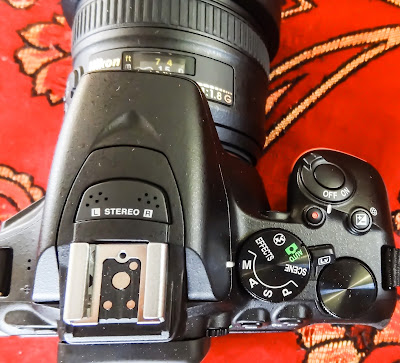The camera of different brands vary in functions and terms but some common settings are general may be the term is different, we will try to demystify some common settings found on the camera and how to be comfortable with those settings as per the time and requirement.
As I already told you that I am a Nikon Camera user, therefore, I will go with the Nikon settings only and if you find yourself uncomfortable with some of the terminologies related to exposure then you may refer to the earlier post on explaining "Aperture, Shutter Speed, and ISO." term.
I am using Nikon D5500 and these are the modes in a camera, you can see the P, S, A, M, Scenes, Effect & Auto.As I already told you that I am a Nikon Camera user, therefore, I will go with the Nikon settings only and if you find yourself uncomfortable with some of the terminologies related to exposure then you may refer to the earlier post on explaining "Aperture, Shutter Speed, and ISO." term.
 |
| Nikon D5500 Modes |
- What should be the white balance
- What Aperture has to be taken
- What shutter speed to use
- Required ISO sensitivity
- Whether to fire flash or not
2. PROGRAM (P) - This mode is considered similar to Auto mode because under this mode camera automatically adjusts aperture and shutter speed for optimal exposure depending on the lighting condition but the additional feature that it offers is its setting can be overridden. This is also known as a flexible program.
A disadvantage of manual setting is once the camera settings are done and you are finished with your job after few days when you pick your camera again you will find the same settings that you previously set. This is not in the case of 'Program' mode, it doesn't remember the settings. Once you off the camera and switch it on, recalculate the settings depending on the available lighting condition.
3. SHUTTER PRIORITY (S) - If someone wants to understand only the term then it means photographer choose the shutter speed and then the camera automatically adjusts the aperture for the best exposure.
Now the question arises why do we need the shutter priority mode?
What I have to say is that you have to use the features given in the camera in its best possible way in order to achieve the required quality in your work and that is possible only if you understand the basics of it, now I would like to explain it with an example- you are on a travelling and on a way to bird or wild photography, you have to capture the snap of a bird catching fish from a river or a bird on flight then in that case you have to set the 'fast shutter speed' in order to capture the clear view of a bird without any shake or haze in picture and you don't have much time to adjust other settings, under this mode camera automatically adjusts the aperture and you click your best possible shot.
4. APERTURE PRIORITY (A) - In simple terms, it means photographer choose the aperture and then the camera automatically adjusts the shutter speed for the optimal exposure.
Aperture priority is mostly used for controlling the depth of field and this is most useful when you want to defocus the subject background or if you are taking a shot of a group that requires a longer depth of field because you want all the members of the group to be in focus. In this depending on the situation then only you have to decide the aperture.
5. MANUAL (M) - Manual mode is considered as the best do it yourself of the camera settings. Under Manual mode, there is no restriction of under expose or over expose images because this mode will give you the warning but won't interfere with whatever settings you are taking the snap. There is one setting which is called Bulb Mode and under this you can keep the shutter open as long as you hold down the button. Another Time Mode and under this mode once you press the button to open the shutter and again to close it.
Your views and queries are always welcome and if you want to share anything apart this, then also your initiative is appreciated.











0 comments:
Post a Comment